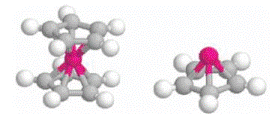Department of Physics and Astronomy: Publications and Other Research

Peter Dowben Publications
Document Type
Article
Date of this Version
May 2003
Abstract
The temperature dependence of the spin polarization of half-metallic ferromagnets is investigated. A unitary spinor transformation shows that the corresponding spin mixing goes beyond finite-temperature smearing of the Fermi level, leading to a nonzero density of states in the gap of the insulating spin channel. As a consequence, the resistance ratio of the two spin channels changes from infinity to some finite value and, in a strict sense, half-metallic ferromagnetism is limited to zero temperature. Bloch-type spin waves and crystal imperfections contribute to the density of states in the gap but only partly explain the pronounced changes at about 0.2 TC observed in various half-metallic magnets. In the case of NiMnSb, the spin structure depends on a nearly dispersionless transverse optical mode that occurs at about 28 meV. In terms of 3 kBT, this corresponds to 103 K—very close to the temperature at which there is a dramatic loss in the Ni and Mn magnetization in NiMnSb. Similar modes exist in other potential half-metallic systems. © 2003 American Institute of Physics.


Comments
Published Journal of Applied Physics 93 (2003) 7948-7950. Permission to use.